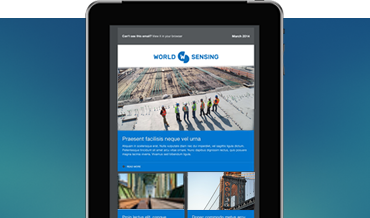How to improve the monitoring of combined sewer system projects
Cities in many parts of the world face a challenge as climate change leads to heavier, more pronounced rainfall. Around 700 cities have aging combined sewer system networks where there is a danger that heavy rains could lead to an overflow of rainwater mixed with sewage, leading to critical health risks.
Many of these cities are looking to avert the risks by investing in large-scale water tunnels deep underground. The tunnels are designed to carry rainwater to storage and treatment facilities without endangering surrounding communities. But the construction of these hydrological tunnels is far from easy, and demands careful consideration of monitoring technologies, according to a Worldsensing webinar on the subject.
One of the major issues is that the tunnels are built to last for decades but may not be easily accessible on a regular basis, making it important to have long-range wireless monitoring systems that can relay information on the state of the tunnel to remote control centers. Ideally, monitoring systems should be able to remain below ground and work reliably for years on end.
LoRa technology in combined sewer system projects
LoRa technology, the wireless communications protocol used in Worldsensing’s product suite, is ideal for this because it has low power requirements and allows battery-operated data loggers to remain in operation for years without needing new batteries or maintenance. The technology is useful not only for long-term monitoring of operational tunnels, using devices such as water meters and pH sensors, but also during tunnel construction.
Deepwater tunnel construction projects linked to combined sewer systems are potentially risky because they often take place beneath built-up areas that may contain structures of historic importance. For this reason, construction projects usually involve a range of sensors, such as vibrating wires to check for underground water and tiltmeters to monitor for displacement in neighboring structures.
The monitoring systems required will depend on the scale of the project, but it is important to ensure any wireless network is compatible with a wide range of sensors and can allow for integration with multiple data analysis tools. One project that exemplifies the challenges encountered in deep hydrological tunnel construction is the Northeast Boundary Tunnel in Washington DC, US.
Improving tunnel monitoring in Washington DC
“This project was to upgrade a combined sewer system currently flooding residential neighborhoods,” said Tyree Williams, Sales Manager at Specto Technology, which supplied geotechnical and structural instrumentation for the scheme.
The tunnel has nine construction sites and is intended to reduce stormwater overflows into the nearby Anacostia River by 98%, making it swimmable by 2030. Contractor EnTech Engineering installed monitoring instrumentation in around 280 locations to track issues such as ground movement, vibration and tunnel stability. The sensors were linked via a Loadsensing wireless network.
“There was no need for trenching in the roadway, which saves a huge bunch of money and time,” Williams said during the webinar. “The LoRa technology is reliable [and] it has a range of up to seven to nine miles, without a line of sight. Even under a steel manhole, you are reaching a mile of range.”
To find out more, watch the webinar now.
